
Interactive webcasting, a growing market in Brazil
Since the late nineties, Dutch company Connecting Media has been producing live webcasts from any location in the world. Dance-events, Corporate events, live streaming from nunneries, 24 Hours of Francorchamp + other races in Belgium and Netherlands , a lot of Freefight events in Europe are just some of the productions they did. They were the first to have a special OBvan for internet productions ( IFP - Internet Field Production ) and nowadays they work with Fly-away sets. After their first experiences streaming 2 music events from Holland and Budapest, they figured out there could be many interactive possibilities besides ”just” webcasting video. Especially compared to TV transmissions back then. In this interview, we caught up with the managing director of Connecting Media in Brazil, René Schaap.
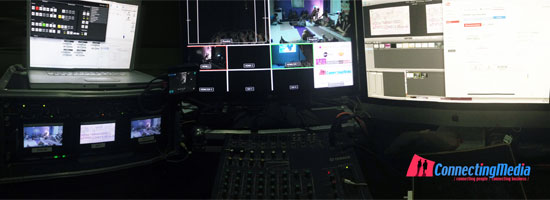
BB: What were your first attempts in making live streaming more interactive?
CM : We started simply with adding on-demand video’s next to the stream, during these live music events. Meaning that in a break or people could start to watch interviews with DJ’s that we made just 30 minutes before and edited and uploaded directly. People could also send us questions to the DJ’s so we could include these questions in the interviews. Our visitors loved that, because they felt like being part of the event even when they were not there. At later events in 2005, where speakers presented their company and innovations by using PowerPoints, we developed our Slide System. We found that, even though some speakers are stil working on their latest presentation minutes before they started, the best way was to get the presentation from them, and quickly batch convert the slides in our system to be able to switch them live besides the video stream on the event page. This meant more info for the viewer, and usually sharper and better quality of the slides.
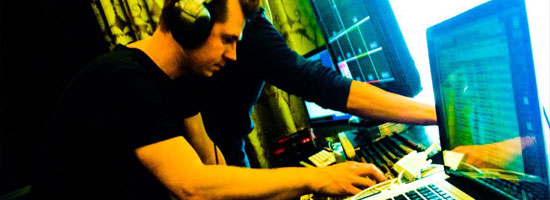
BB: The available bandwidth in Europe was growing last decade, did this bring more possibilities for live webcasting?
CM: Yes, we could make 5 different streams from one location for example… 6 years ago already. Microsoft was one of our first clients, and at an event we had live streams from 5 different areas where presentations took place within the building. On the Microsoft event page, you could choose what you wanted to see. Also uploading edited video’s next to the stream went better and better. We have to say that we did not raise the bitrate as much as the bandwidth increase allowed, always thinking about the available bandwidth of the possible viewers.
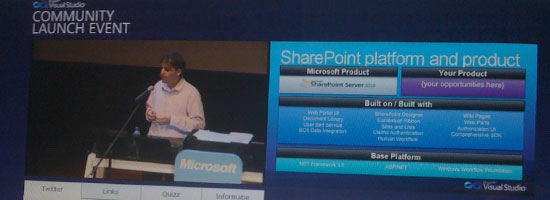
BB: What else did you develop?
CM: Our most used "module" is the Live-slides I mentioned earlier. Syncing PowerPoint slides live with the videostream. But we also integrated live GPS-tracking at sports events, where you could follow the position of sportsmen when they were not actual. Also polls, graphs and the possibility to ask questions during a live webinar and of course all kinds of social media integrations to communicate with the viewer. The latest is live camera switching by the viewers of the livestream, they will be their own TV director.
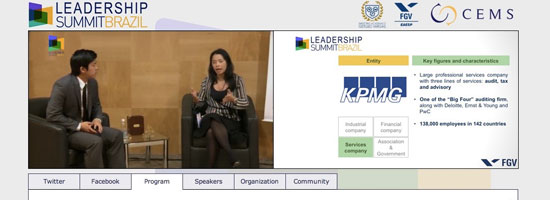
Besides the software we have always used specific hardware to optimize audio and video quality. We have 2 mobile webcast sets in Brazil. A small one for simple productions and an extended one for 6 camera’s. We work in HD, we can record the event in HD and make a short edit during the event itself. We have our own camera’s we can also integrate other signals and add the livestream to for example a LED-Wall or an OB / Satellite Uplink van.
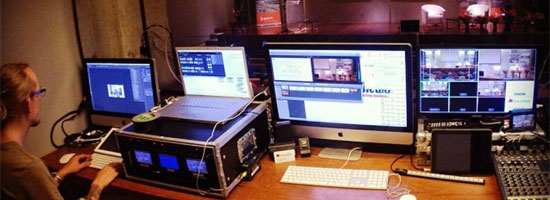
BB: Did you webcast in Brazil?
CM: A lot, I just will give some special examples. We started in 2008 to learn the market here, which is different than Europe. In 2011 we produced a live interactive webcast at an event for the FGV university in São Paulo named the Leadership Summit, and repeated this in 2012. At the MAM (Museu de Arte Moderna) we did a livestream for Sencity to another location in Rotterdam, The Netherlands where the event took place at the same time. Here our guys from the Netherlands sent us the live-stream from in Rotterdam, making it a two-way webcast with the possibility of artist performing at both locations. We also did a live interactive webcast for Urban Mobility in São Paulo. Besides the interactive webcasts we often have ”normal" livestreams for events and companies like Namaskar Yoga in Santos. Every month we stream the event Roda da Mães live on their YouTube channel.
BB: Did you encounter any difficulties when starting in Brazil, that you did not have in Europe?
CM: I would say ‘not more than in Europe’, although Europe is easier to connect because of the infrastructure. Like in Brazil nowadays we have had a lot of struggles with stable bandwidth with internet connections from some providers. When you have rain, it is even worse. In the most of Europe this is not much of an issue anymore. I think mostly it’s the fact that locations are not prepared for live streaming yet. I would rather see big event locations like soccer-stadiums, event-halls and conference centers, have a dedicated line especially for this. it would mean they can serve their clients better and interact more with the outside world. Act more like an event organiser, with better service they can control. We ourselves are using satellite uplinks more and more, if only for the fact that you have more ”ownership" over your connection. A dedicated internet line is as expansive almost as a satellite uplink truck in Brazil in which of course is very weird. An uplink truck can deliver a very stable connection, a dedicated line can still suffer from all the boxes, routers, patch panels between the location and the CDN.
Another thing in Brazil can sometimes be the language and cultural differences. Cultural differences are interesting and make traveling fun, but people should be aware of them and listen to each other to understand better. Our Brazilian co-workers speak English besides Portuguese. Because of our international clients, we cannot work with a crew that’s only communicating in Portuguese.
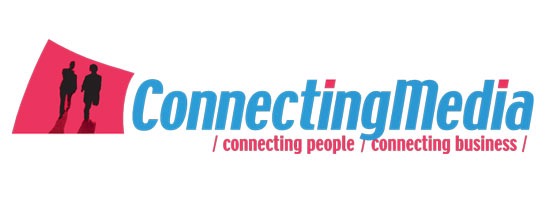
BB: Where lies the future for Connecting Media in Brazil?
CM: Of course doing more interactive webcast projects in Brazil, the companies and events are aware of our possibilities. Besides that we also want to extend and integrate our Broadcast, Web and Mobile solutions. Our business is just starting here but we already have some great partners and are positive about the future.
Like us if you want on Facebook, and follow us on Twitter and Subscribe to our YouTube channel.
mentioned:
Connecting Media : Website - Facebook - Twitter - YouTube - Instagram
Webcast Urban Mobility : Website
Webcast Campeonato Europeu de carabine e pistola de ar : Website